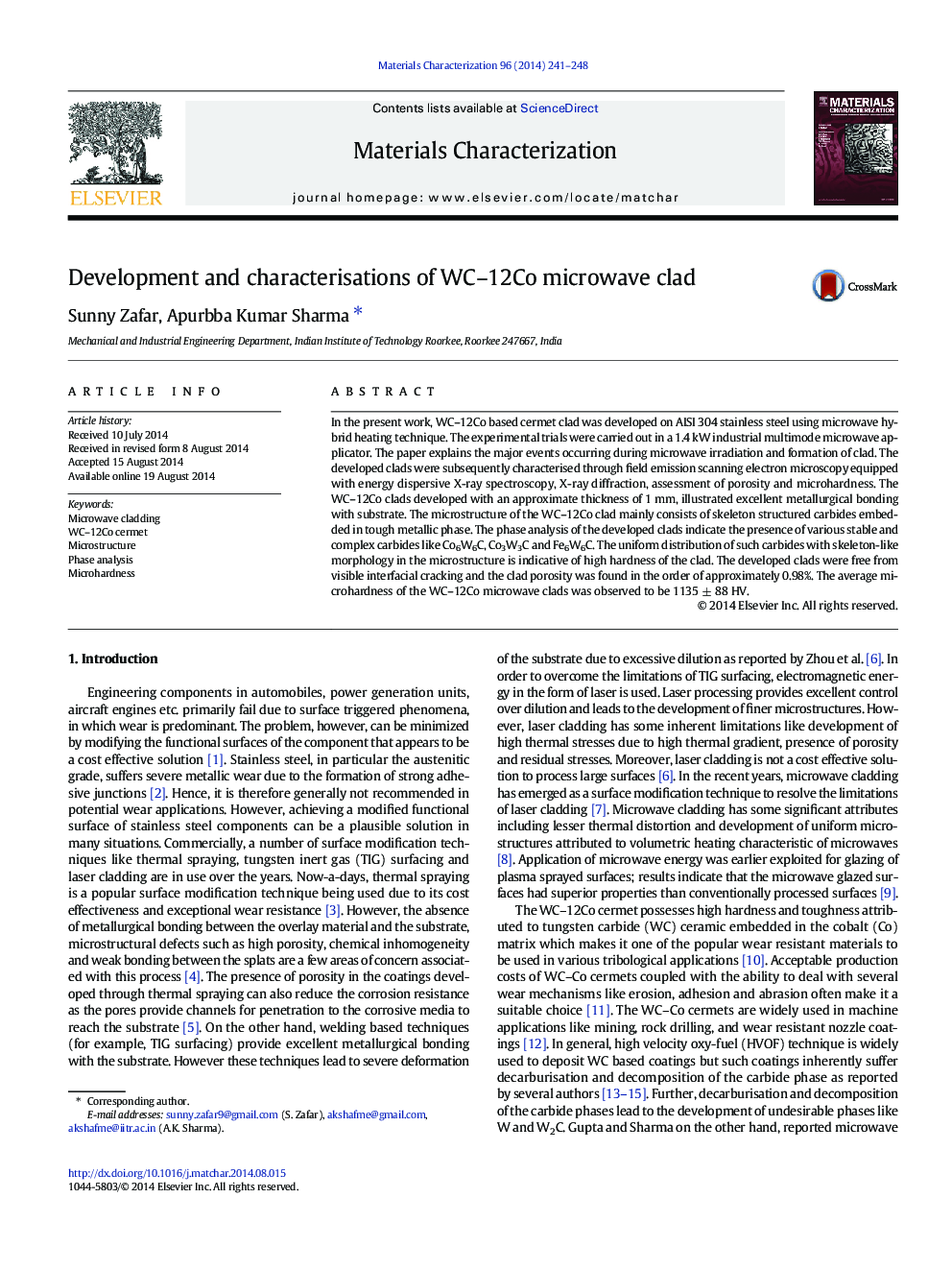| Article ID | Journal | Published Year | Pages | File Type |
|---|---|---|---|---|
| 1571065 | Materials Characterization | 2014 | 8 Pages |
•Microwave cladding of WC–12Co on AISI 304 stainless steel is carried out.•Skeleton-like structures of W–Co based carbides are embedded in metallic matrix.•Clad–substrate interface is free from un-melted and un-dissolved carbide particles.•Hardness of clad (1135 ± 88 HV) is 3.5 times that of the substrate (325 ± 49 HV).
In the present work, WC–12Co based cermet clad was developed on AISI 304 stainless steel using microwave hybrid heating technique. The experimental trials were carried out in a 1.4 kW industrial multimode microwave applicator. The paper explains the major events occurring during microwave irradiation and formation of clad. The developed clads were subsequently characterised through field emission scanning electron microscopy equipped with energy dispersive X-ray spectroscopy, X-ray diffraction, assessment of porosity and microhardness. The WC–12Co clads developed with an approximate thickness of 1 mm, illustrated excellent metallurgical bonding with substrate. The microstructure of the WC–12Co clad mainly consists of skeleton structured carbides embedded in tough metallic phase. The phase analysis of the developed clads indicate the presence of various stable and complex carbides like Co6W6C, Co3W3C and Fe6W6C. The uniform distribution of such carbides with skeleton-like morphology in the microstructure is indicative of high hardness of the clad. The developed clads were free from visible interfacial cracking and the clad porosity was found in the order of approximately 0.98%. The average microhardness of the WC–12Co microwave clads was observed to be 1135 ± 88 HV.
